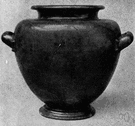

When used in this sense, an Artifact is just a glorified name made up of such parts as groupId, artifactId, version, scope, classifier and so on. A repository manager doesn't care where its artifacts come from (maybe they came from a Maven build, or a local file, or an Ant build, or a by-hand compilation.).Ī Maven Artifact is a Java class that represents the kind of "name" that gets dereferenced by a repository manager into a repository manager artifact.
DEFINE ARTIFACT SOFTWARE
A repository manager is basically a highly performant naming service for software executables and libraries. dll, or what have you.Ī repository manager artifact is a thing that is, well, managed by a repository manager. There are Maven artifacts, repository manager artifacts and then there are Maven Artifacts.Ī Maven artifact is just as other commenters/responders say: it is a thing that is spat out by building a Maven project. New York: Macmillan.I know this is an ancient thread but I wanted to add a few nuances.

Family resemblances: Studies in the internal structure of categories. Lloyd (Eds.), Cognition and categorization (pp. Putnam (Ed.), Mind, language and reality: Philosophical papers, Volume 2 (pp. Journal of Psycholinguistic Research, 11, 42–67. Will the real grandmother please stand up? The psychological reality of dual meaning representations. Journal of Verbal Learning and Verbal Behavior, 23, 221–236. A characteristic-to-defining shift in the development of word meaning. Marras (Eds.), Language learning and concept acquisition: Foundational issues (pp. The acquisition of natural kind and artifact terms.

Journal of Verbal Learning and Verbal Behavior, 12, 335–359. The language-as-a-fixed-effect fallacy: A critique of language statistics in psychological research.

Developmental Psychology, 23, 31–38.Īrmstrong, S.L., Gleitman, L.R., & Gleitman, H. Developmental differences in episodic retrieval: The role of differences in concept representations in semantic memory. The implications of these findings for the meaning of “defining features” are also discussed.Īckerman, B.P. These results suggest that chromosomal/molecular features define membership in natural kind categories and functional features define membership in artifact categories. There was again a significant interaction, with the effects of chromosomal/molecular features significantly greater for natural kinds than for artifacts, and the effects of functional changes significantly greater for artifacts than for natural kinds. In the second experiment, subjects judged whether something would be an “X” if it were unlike instances of “X” in two of the above types of features, but like instances of “X” in one. A significant interaction was found between word type and change type, with the effects of chromosomal/molecular changes significantly greater for natural kinds than for artifacts, and the effects of functional changes significantly greater for artifacts than natural kinds. In the first, subjects decided if an object “X” would still be an “X” if it were different in one type of feature. Two experiments investigated the role of three types of features (physical characteristics, functions, and chromosomal/molecular structure) in determining membership in natural kind and artifact categories.


 0 kommentar(er)
0 kommentar(er)
